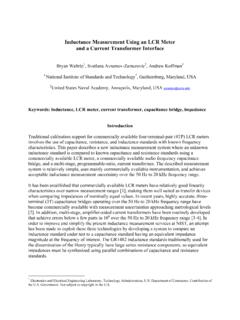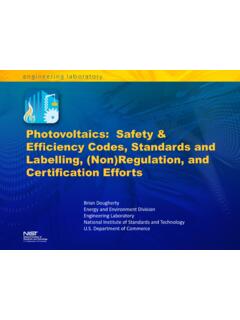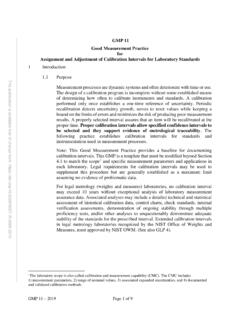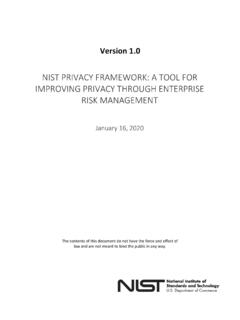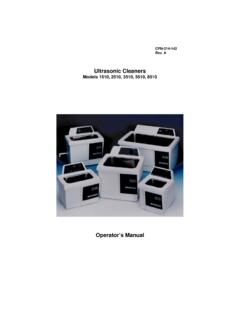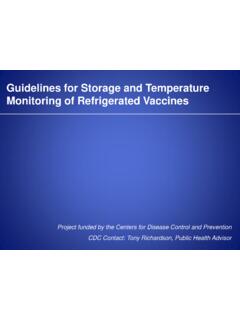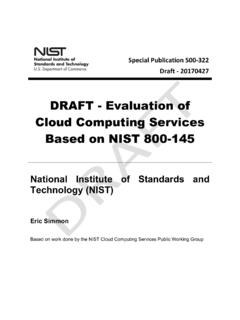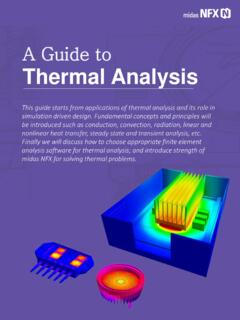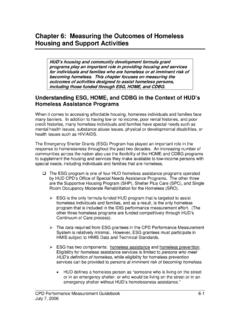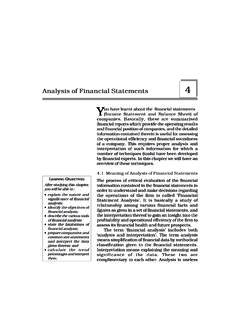Transcription of Climate Measurement: A review of rainfall and ... - NIST
1 Climate Measurement: A review of rainfall and temperature measurement standards in GuyanaOdessa ShakoNational Ozone ManagerMinistry of Agriculture, GuyanaRegional CARIMET WorkshopApril 14-15, 2015 Kingston, JamaicaPresentation Outline How Climate is measured? How Climate change is measured? Why do we measure Climate or Climate change? Climate measurement in Guyana Existing standards for the measurement of Climate Gaps in the implementation of Climate measurement standards in Guyana Recommendations for addressing these gapsWhat is Climate ?
2 Climateis the average weather usually calculated over a 30-year time period for a particular region and time period (2015 Weather Wiz Kids). It is determined by patterns of temperature, precipitation (rain or snow), humidity, wind and seasons (Washington State Department of Ecology) measuring Climate The Climate of a particular region is determined through analysis of Climatological variables in a region over a period of 30-years or greater The parameters measured include: Temperature (maximum, minimum, lower ground and soil) Wind speed Relative humidity rainfall Atmospheric pressure Sunshine hoursHow do we measure Climate change?
3 There are a number of key factors in measuring Climate change, and they are broadly categorized below. The range of instrumentation used to observe and measure Climate is truly amazing. TemperatureWhen measuring Climate change this is a primary and can be measured or reconstructed for the Earth s surface, and sea surface temperature (SST).Precipitation( rainfall ,snowfalletc ) offers another indicator of relative Climate variation and may include humidity or water balance, andwater vegetation patterns may be discerned in a variety of ways and provide evidence of how ecosystems change to adapt to Climate do we measure Climate change?
4 Sea Levelmeasurements reflect changes in shoreline and usually relate to the degree of ice coverage in high latitudes and Activitycan influence Climate , primarily through changes in the intensity of solar Eruptions,like solar radiation, can alter Climate due to the aerosols that are emitted into the atmosphere and alter Climate of air or water can be measured by tracking levels of greenhouse gases such as carbon dioxide and methane, and measuring ratios of oxygen isotopes. Research indicates a strong correlation between the percent of carbon dioxide in the atmosphere and the Earth s mean parameters for measuring Climate changeThe primary parameters for measuring Climate change are: Temperature -near ground temperature Precipitation -liquidThe discussions that follow are focused mainly on these two Measure Climate and Climate Change?
5 Meteorological ( Climate ) measurements are required, either jointly or independently and locally or globally for input to numerical weather models for hydrological and agricultural purposes an as indicators for climatic variability We measure Climate [change] to understand Climate , Climate variability and climatic changes at the local national and regional levels To better understand how Climate [change] impacts our societies To better plan adaptation measures to combat the real and or potential impacts of Climate changeClimate measurement in Guyana The Hydrometeorological Service, Ministry of Agriculture is the official provider of weather, water and Climate information and related products and services for Guyana.
6 The Department s general responsibility is to monitor and evaluate the weather and water resources in GuyanaClimate Stations Network -GuyanaIn addition to these there are six (6) additional stations that are already installed and functioningThere are 2o Automatic Weather stations installed in GuyanaSynoptic Weather StationThere are Nine (9) synoptic weather stations in GuyanaHydromet operates and maintains in excess of 150 rainfall stations. This figure shows the spatial distribution of the stations within the rainfall monitoring network.
7 Climate measurement network in Guyana This manual network of rainfall station is sustained by the Hydromet Service with the support from the public across Guyana, who provides near real-time updates wherever possible. The data collected throughout this Network are archived and housed within the Department and used for further analysis and research both nationally and for Climate measurement in Guyana Climate measurements in Guyana are guided by the World Meteorological Organisation s (2010) Guide for Meteorological Instruments and Methods of for Meteorological Instruments and Methods of ObservationsThis guide sets out guidelines for.
8 Instruments Unit and scale of measurement Frequency of measurement Measurement methods Documenting circumstances in which measurements are taken Siting and exposure of instruments Systematic and random errors and corrections Calibration and maintenance of instruments Storage of instrumentsStandard for temperature Measurement -Guyana Parameter Near Ground Temperature Instruments Thermometers (Ordinary (dry and wet bulb), Maximum and Minimum) Usually mercury-in-glass type Automatic Weather SystemStandard for measuring temperature -Accuracy Requirement Thermometer characteristic requirement All temperature measuring instruments should be issued with a certificate confirming compliance with the appropriate uncertainty or performance specification.
9 Or a calibration certificate that gives the corrections that must be applied to meet the required uncertainty Thermometers are required to be recalibrated at least two years following the first calibration The only recognised calibration centerfor meteorological instruments available regionally is located at the Caribbean Institute for Meteorology and Hydrology (CIMH) in for measuring temperature Procedure for Measurement Procedure for Measurement -Readings are made to the nearest tenth of a degree Corrections for scale errors, should be applied to the readings Maximum and Minimum thermometers are read once daily.
10 Max at 00 UTC (20:00 hours) and min in the morning about 10 UTC (06:00 hours)Standard for measuring temperature -Thermometer Siting and Exposure Siting and Exposure -Thermometers are always exposed in a thermometer screen placed on a support The extreme thermometers are mounted horizontally on suitable supports Thermometers are mounted above ground level Screens are usually mounted on levelled Measurement Standard -Instrument Instrument Manual rain gauges, transmitting rainfall gauges and Automatic Weather Stations The orifice diameter and corresponding cylinder for manual rainfall gauges in Guyana is 5 inches and 8 inches for automatic weather stations.
